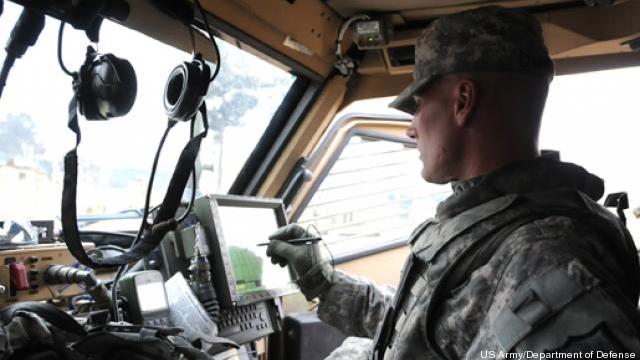Army Gives JTRS One More Shot — On Apaches
Posted on
 Washington: The Army is giving a version of the Joint Tactical Radio System one more shot at becoming part of its new networking strategy, weeks after terminating a separate version of the next-generation radio.
Washington: The Army is giving a version of the Joint Tactical Radio System one more shot at becoming part of its new networking strategy, weeks after terminating a separate version of the next-generation radio.
An airborne JTRS variant built by Lockheed Martin is set to fly next week as part of the Army’s latest Networking Integration Exercise at White Sands Missile Range in New Mexico. The variant will be mounted on a prototype version of the Army’s newest Apache attack helicopter during the tests, program manager Col. Shane Openshaw said today. It will be used to pass voice and image data from the helicopter to ground units during the exercise. This version of the radio will use DoD and NATO-standard Link 16 to pass information around the battlefield, according to Openshaw.
Testing on the air version of JTRS comes as the Army begins its search to replace the handheld version of the system known as the Ground Mobile Radio. Excessive costs and schedule delays prompted the cancellation of that Boeing-built JTRS variant. Lackluster performances at past NIEs helped seal the program’s fate, Army acquisition chief Heidi Shyu said at the U.S. Army Association’s annual conference in October.
Service officials plan to have a proposals request for a GMR replacement out to industry this month. The Marine Corps is working its own GMR replacement based on battle-tested communication systems already deployed in Iraq, Afghanistan and elsewhere.
But program officials at Lockheed Martin remain confident the aerial JTRS variant they have built will not suffer the same fate as the GMR. Getting their airborne JTRS radio — known as the Airborne and Maritime Fixed Station variant — to the Army as fast as possible is the company’s top priority, said Mark Norris, the program’s vice president.
To get there, the Army will run the AMF radio through six different combat vignettes during the White Sands network trials, Doug Booth, Lockheed’s team leader for the NIE exercise, added. Those vignettes will show how well the Link 16-based AMF radio can link up with other communication systems in the Army’s network, he said. Once proven, Army and industry officials can then start integrating the service’s two key networking waveforms — the Soldier Radio Waveform (SRW) and Wideband Networking Waveform (WNW).
Those two waveforms have been touted by the Army as the backbone of its future networking strategy. The service is adamant it will be the waveforms, not the individual radio systems, that will ensure the network strategy’s success. Norris is very confident that future versions of the AMF radio will be able to carry WNW and SRW. The big question is when the company can deliver those systems to the Army.
The Pentagon has ordered Lockheed to rejigger the AMF program to make sure the radio stays on budget and on schedule. Earlier versions were designed to handle a slew of communication networks — from Link 16 through the Army waveforms — in a single radio. That approach proved too costly. The restructured plan breaks the program into manageable pieces. Those pieces will focus on individual networks, rather than piling them into a single radio.
Restructuring of the program will not affect the Army’s evaluation of the Link 16-based version of radio during the NIE, Openshaw said. The changes to the program will be felt when the Army develops the waveform-based version of AMF, he added. Norris said the AMF would be able to “fully support all of the other waveforms” the Army wants on the radio — whenever that ends up happening.
Subscribe to our newsletter
Promotions, new products and sales. Directly to your inbox.
